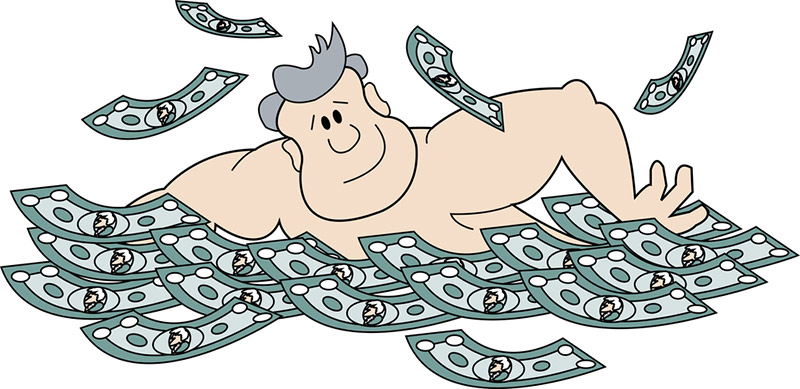1stwebdesigner |
| Master the Core: Web Design Code of Ethics Posted: 05 Nov 2014 06:00 AM PST Web design, like any other profession, should always be ethical. It should always adhere to a set of norms set by the whole community. These codes guide designers to perform their tasks in the most honest and professional way possible. But for the world of web design, being dynamic and fast-paced as it seems to be, still has not recognized a single set of ethics, the web design code of ethics.
That is why we propose these codes in this particular character:
Honesty and Fairness in Treating ClientsHonesty to clients should be the premier concern of web designers. As a professional, you have to say the truth about what you think and feel about the client and the project. You need to be fair to them and never resort to overpricing, misleading work and all those shenanigans. If you want your clients to be honest with you, you have to be honest with them first. Things you should be honest:
Some clients are cheated in terms of pricing. At times, in the web designers' wanting to earn more money using the least of efforts; they resort to overpricing their clients. As a responsible web designer, you should remember to be honest about money. You should be paid at the rate of your work. Don't put hidden charges. Be clear about additional payments for revisions and more. How would you price your clients? These articles provide great insights:
Deadlines are probably one of the things most designers lie about. Normally, clients have two ways in setting deadlines:
Scenario 1.The client sets the deadlines. This option can be pressuring for a web designer. Your client gives you a certain time to finish your project and you have to deliver on or before this said day ends. That is a privilege you can't take away from them. They, too, have their own deadlines to meet.Now, what will you do if the client gives you a deadline you're not sure you can finish? Most greenhorn designers will surely choose to take on the project, compress the time, cram and rush their task. Some other experienced ones will still take the project on. But when the deadline approaches, they are unable to finish it. So, what you supposed to do?
Scenario 2.You set your own deadline. This option gives the designers some flexibility with how will they finish the project. Most designers want this because they will be able to work at their own timeframe. In this option, designers have choice how to juggle their own time.This gives the designer some flexibility on finishing the projects because they can work at their own timeframes. However, doing this will be prone to procrastination. This gives the designer some flexibility with how the designer can finish the project. Most designers want this because they will be able to work at their own pace. Because of this, the designer has the ability to juggle his own time. However, being able to set your own deadline can lead to procrastination. So, what are you supposed to do?
Client ConfidentialityPrivacy has been a well-discussed issue online nowadays. With risks in the divulgence of unsolicited information, confidentiality has become a pressing issue in web design. An ethical designer will:
Some clients state these things in the contract, and web designers should follow it by the dot. Following this code would mean that you will not, in any way, discuss to competing clients and other designers the specifics of your project. Doing so might jeopardize the company and you! So, better be careful with what you blurt out. Here are some articles that you would want to read:
Honest Competition
Of course, you are not the only person who is into web design. Whether you want it or not, there will be competition. There are some designers who came before you and they could be way better. The best you can do is to improve your skills and talents to a point where you can compete fair and square. Ethical designers play by the rules.They don't engage in dirty tactics like smearing on others' reputation. They also don't involve themselves in hacking other designer's works to destroy them. To be an honest competitor, you should:
Avoiding Software Piracy and Idea-TheftResponsible designers are not thieves. Because they know how precious ideas are, they do not support piracy and copyright infringement. To them, using someone else's work without giving the creator enough credit is an abomination.
What is Software Piracy?Software piracy is the unauthorized use and replication of software. It's the act of using a for-one-computer-use-only software to other computers as well. This is illegal because it cripples the industry that develops the programs. Imagine if you worked on a software for so long only to find out that days after you released it in the market, it had been copied by pirates. Your efforts, ideas and frustrations would be all for nothing. Despite the efforts of the government, the stakeholders and programmers, software piracy is impossible to contain. There are existing laws that cover such act but with the great number of Internet pirates, it's impossible to keep up. Common types of software piracy are:
What Is Idea Theft?Idea theft is the act of snatching ideas, using and popularizing them before the victim does first.This act may include code plagiarism, copyright infringement and patent stealing. Idea thieves cripple the industry as they destroy originality in business. There are a lot of ways to prevent this. Let's enumerate a few:
Spyware, Unsolicited Advertising and Black Hat Techniques
Aside from stolen ideas and software, there are techniques some web designers use to harm others. As a responsible and ethical designer, you have to be knowledgeable of these practices because for all you know, you are practicing them. SpywareAccording to Microsoft, Spyware is:
Spyware is often paired with software that uses adware or software that tracks your personal and sensitive information. How spyware affects you:
Black HatBlack hat is a famous word in SEO. However, it touches web design too as it is often used in connivance with web designers. When we say Black Hat, we refer to the aggressive use of SEO techniques and schemes to fool search engines and put a certain website in the first pages. Popular examples of this act include:
Protection of Women and Children
As a web designer and a responsible human being, you have to protect the causes of children and women. Designing web pages that can be debilitating for the reputation of women and children should be avoided. As much as possible, you shouldn't agree to designing pornographic, pedophilic and violent websites. ConclusionWe build websites to make the world a better place. We adhere to norms that guide us to become better web designers. For after all, we are responsible for what we build. The team here at 1stwebdesigner is one in following this code of ethics. Are you up for the challenge? |
| You are subscribed to email updates from 1stwebdesigner To stop receiving these emails, you may unsubscribe now. | Email delivery powered by Google |
| Google Inc., 1600 Amphitheatre Parkway, Mountain View, CA 94043, United States | |









No comments:
Post a Comment